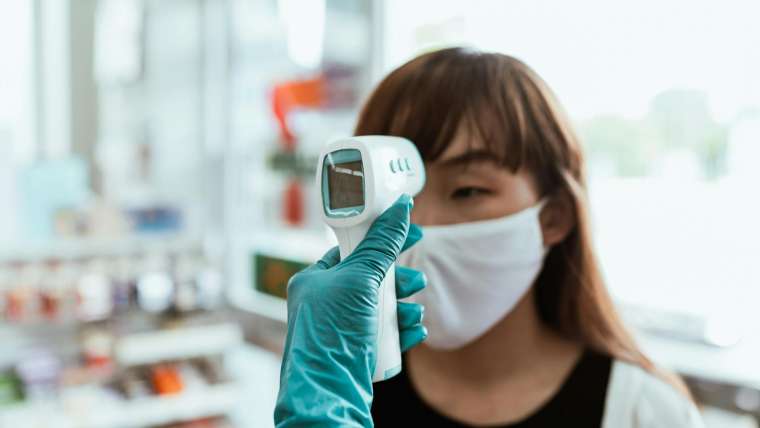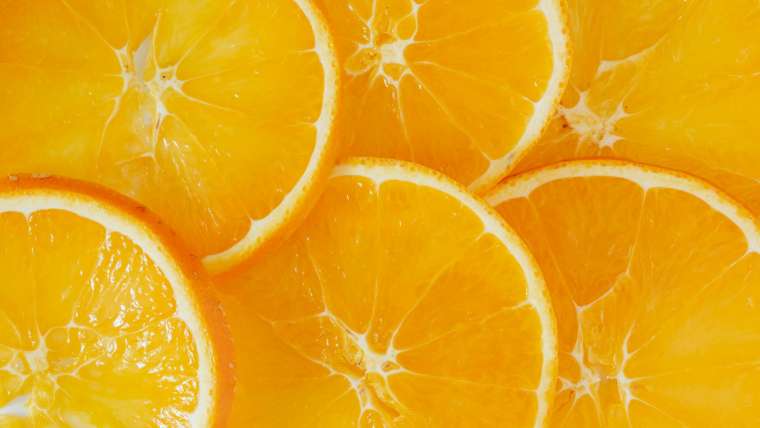Discover the top 5 treatments to beat yeast infections for good! Say goodbye to discomfort and learn how to thrive.
Table of Contents
- Introduction to Yeast Infections
- Understanding Yeast Infections
- The Top Treatments for Kicking Yeast Infections
- Antifungal Creams to the Rescue
- Probiotics: The Friendly Fighters
- Prescription Medicines: When You Need Extra Help
- Home Remedies: Do They Work?
- Keeping Yeast Infections Away
- The Link Between Diet and Yeast Infections
- When to Seek Professional Help
- Conclusion: Stay Yeast-Free!
- Frequently Asked Questions (FAQs)
Introduction to Yeast Infections
We’ll start off by talking about what a yeast infection is and why it can be a bother for some people. Yeast infections, also known as candida or thrush, are caused by a tiny germ called Candida. This pesky germ can lead to uncomfortable symptoms, but the good news is that there are effective treatments available to help you beat yeast infections.
Understanding Yeast Infections
Yeast infections can be a bit of a bother for some people. Let’s dive into what causes them and how you can tell if you might have one.
What is Candida?
Candida is a tiny germ that can cause yeast infections. It’s like a little troublemaker that can make you feel itchy and uncomfortable down there. It’s important to know what candida is so you can keep an eye out for it.
Symptoms of a Yeast Infection
So, how do you know if you’ve got a yeast infection? Well, pay attention if you start feeling itchy and if things down there seem a bit off. Sometimes, you might see some white, cheesy-looking stuff, which is a sign that something might not be right. If you notice any of these symptoms, it might be time to talk to an adult about it.
The Top Treatments for Kicking Yeast Infections
Now let’s dive into the best ways to say goodbye to those pesky yeast infections.

Image courtesy of www.pinterest.com via Google Images
Antifungal Creams to the Rescue
Special creams can help fight the yeast infection. We will learn how these creams work their magic.
How Antifungal Creams Work
A simple explanation of how these creams zap the yeast causing the infection.
Probiotics: The Friendly Fighters
Let’s meet the tiny helpers in your body that battle the yeast infection.
What are Probiotics?
Discover what probiotics are and how they can help you stay healthy.
Antifungal Creams to the Rescue
Special creams can help fight the yeast infection. We will learn how these creams work their magic.
How Antifungal Creams Work
Antifungal creams are like tiny soldiers sent to battle the pesky yeast causing the infection. They contain special ingredients that target the yeast and stop it from growing. When you apply the cream to the affected area, it creates a barrier that prevents the yeast from spreading further.
These creams typically need to be used for a certain number of days as directed by a doctor to make sure all the yeast is gone. While using the cream, it’s essential to follow the instructions carefully to ensure the best results.
Antifungal creams are a reliable and easy way to kick yeast infections to the curb. They can provide quick relief from uncomfortable symptoms like itching and burning, helping you feel better in no time.
Probiotics: The Friendly Fighters
Let’s meet the tiny helpers in your body that battle the yeast infection.

Image courtesy of www.findatopdoc.com via Google Images
What are Probiotics?
Probiotics are like the good guys in a superhero movie – they help your body stay healthy and keep the bad guys, like yeast infections, in check. These friendly bacteria can be found in some foods like yogurt, kefir, and pickles, as well as in supplement form. When you take probiotics, they work to balance the good and bad bacteria in your gut, making it harder for yeast infections to take over.
So, next time you have some yogurt or a tasty pickle, remember that you’re helping those friendly fighters do their job in keeping you healthy.
Prescription Medicines: When You Need Extra Help
Sometimes, your body needs a little extra help from medicines that the doctor gives you. It’s essential to know when it’s time to ask a doctor for stronger yeast infection treatments. Prescription medicines can be a powerful ally in fighting off stubborn yeast infections.
Talking to Your Doctor
When you have tried over-the-counter treatments and they haven’t worked, it might be time to seek professional help. Your doctor can assess your situation and recommend prescription medicines tailored to your specific needs. These medications are usually more potent and effective in treating severe or recurring yeast infections.
It’s crucial to provide your doctor with accurate information about your symptoms, medical history, and any medications you are currently taking. This will help them determine the best course of action and prescribe the most suitable treatment for you.
Home Remedies: Do They Work?
Some folks try treating yeast infections at home. Let’s find out if this is a good idea.

Image courtesy of www.pinterest.com via Google Images
Natural Treatments
When it comes to dealing with yeast infections, some people turn to natural remedies found at home. These could include things like yogurt, garlic, or essential oils. While these remedies are popular, it’s essential to remember that the effectiveness of home remedies may vary from person to person.
| Treatment | Description | Pros | Cons |
|---|---|---|---|
| Antifungal Medications | Prescription or over-the-counter medications to kill yeast | Effective at treating yeast infections quickly | Possible side effects and risk of developing resistance |
| Probiotics | Good bacteria that can restore balance to the gut | Promotes healthy gut flora and can prevent yeast overgrowth | May take longer to see results compared to medications |
| Dietary Changes | Avoiding sugar and processed foods to starve yeast | Natural approach that can prevent future yeast infections | Requires discipline and may take time to see results |
| Yogurt | Contains live cultures that can help rebalance gut flora | Natural and easily accessible treatment option | May not be potent enough for severe yeast infections |
| Tea Tree Oil | Natural antifungal agent that can be applied topically | Can provide relief from itching and irritation | Possible skin irritation or allergic reactions |
Yogurt, for example, contains beneficial bacteria known as probiotics that can help maintain the balance of good bacteria in the body. Eating yogurt with live cultures or even applying it directly to the affected area may help in soothing symptoms. Garlic is another food that some believe can have antifungal properties, but there is limited scientific evidence to support this. Essential oils like tea tree oil have also been used topically, but caution must be taken as they can sometimes cause skin irritation.
It’s important to remember that while home remedies may provide relief for some individuals, they are not guaranteed to work for everyone. If you are considering using natural treatments for a yeast infection, it’s a good idea to consult with a healthcare provider to ensure that they are safe and appropriate for your situation.
Keeping Yeast Infections Away
Yeast infections can be a real bummer, but there are things you can do to keep them from coming back. Let’s explore some simple tips to help prevent those pesky yeast infections.
Daily Tips for Prevention
One of the best ways to keep yeast infections away is by practicing good hygiene. Make sure to keep the genital area clean and dry, especially after bathing or swimming. Wearing loose-fitting cotton underwear can also help by allowing air to circulate and preventing moisture buildup.
Avoid using scented soaps or feminine products in the genital area, as these can disrupt the natural balance of good bacteria and yeast. Stick to mild, unscented products to keep your delicate skin happy.
Another important tip is to change out of wet clothing, like sweaty workout gear or swimsuits, as soon as possible. Yeast thrives in warm, moist environments, so keeping dry is key to preventing infections.
Eating a healthy diet rich in fruits, vegetables, and whole grains can also help keep yeast infections at bay. Avoiding sugary and processed foods can help maintain a healthy balance of bacteria in your body, reducing the likelihood of developing an infection.
Lastly, staying well-hydrated by drinking plenty of water throughout the day can help flush out toxins and keep your body running smoothly. Remember, a healthy body is better equipped to fend off infections, so take care of yourself inside and out!
The Link Between Diet and Yeast Infections
What you eat might affect your chances of getting a yeast infection. We will explore how.

Image courtesy of www.wbfo.org via Google Images
Foods to Eat and Avoid
Our bodies are made up of trillions of microorganisms, including bacteria and yeast. In most cases, these microorganisms live in harmony with our bodies and don’t cause any harm. Yeast infections, like candida, happen when there is an overgrowth of yeast in our system.
What we eat plays a crucial role in keeping the balance of these microorganisms in check. Foods rich in sugar and refined carbohydrates can feed the yeast and increase its growth, potentially leading to an overgrowth and causing a yeast infection. Therefore, it’s essential to limit the intake of sugary foods, processed snacks, and sweet beverages to help prevent yeast infections.
On the other hand, incorporating probiotic-rich foods like yogurt, kefir, and sauerkraut into your diet can help maintain a healthy balance of good bacteria in your gut. These probiotics can inhibit the growth of harmful yeast and support overall gut health, reducing the risk of developing a yeast infection.
Furthermore, including fiber-rich foods like fruits, vegetables, and whole grains can promote good digestion and help flush out excess sugar from the body, creating an environment less favorable for yeast overgrowth.
In addition to monitoring your diet, staying hydrated and practicing good hygiene are also important factors in preventing yeast infections. Drinking plenty of water helps flush out toxins from your body and promotes healthy skin, while practicing good hygiene habits, such as keeping your genital area clean and dry, can help reduce the risk of developing a yeast infection.
When to Seek Professional Help
Dealing with a yeast infection can be uncomfortable, but sometimes it’s important to seek help from a doctor. If you’ve tried over-the-counter treatments like antifungal creams or probiotics and you’re not seeing any improvement, it might be time to consult a healthcare professional.
Knowing When to Ask for Doctor’s Advice
If your symptoms are severe and not getting better, it’s best to reach out to your doctor. They can provide you with stronger treatments that are only available through a prescription. Don’t be afraid or embarrassed to talk to your doctor about your yeast infection – they’re there to help you feel better.
Remember, it’s always better to be safe and seek professional help if you’re unsure about how to treat your yeast infection effectively.
Conclusion: Stay Yeast-Free!
After learning about yeast infections, their causes, symptoms, and treatments, it’s clear that prevention is key to staying yeast-free. By incorporating simple habits into your daily routine, you can significantly reduce the risk of experiencing the discomfort of yeast infections.

Image courtesy of www.bumbleandbumble.com via Google Images
Remember, maintaining good hygiene practices, wearing breathable fabrics, and avoiding sugary foods can all contribute to keeping yeast infections at bay. Additionally, being aware of the signs of a yeast infection and taking prompt action when symptoms appear is crucial in preventing the condition from worsening.
While over-the-counter antifungal creams and probiotics can be effective treatments for yeast infections, a healthy lifestyle and proper self-care are essential in preventing them from recurring. By making small adjustments to your daily habits and listening to your body’s needs, you can stay yeast-free without the need for frequent treatments.
Ultimately, staying yeast-free is within your reach with a proactive approach to managing your health. By prioritizing prevention and taking steps to address any early signs of a yeast infection, you can enjoy a life free from the discomfort and inconvenience often associated with this common condition.
Frequently Asked Questions (FAQs)
Answers to the most common questions you might have about yeast infections and their treatments.
What causes yeast infections?
Yeast infections are usually caused by an overgrowth of a tiny germ called Candida. When this germ multiplies more than usual, it can lead to a yeast infection.
How do I know if I have a yeast infection?
If you experience itching, burning, or unusual discharge in your private area, you might have a yeast infection. It’s always a good idea to check with a doctor if you’re not sure.
What are antifungal creams and how do they work?
Antifungal creams are special creams that help fight the yeast causing the infection. These creams work by killing the excess yeast and stopping their growth, helping you get rid of the infection.
What are probiotics and how can they help with yeast infections?
Probiotics are tiny helpers in your body that battle harmful germs like Candida. By taking probiotics, you can help keep the balance of good and bad bacteria in your body, which might help prevent yeast infections.
When should I talk to my doctor about my yeast infection?
If you’ve been trying treatments at home for a yeast infection and it doesn’t seem to be getting better, or if you have recurring yeast infections, it’s best to talk to your doctor. They can give you stronger treatments to get rid of the infection.





